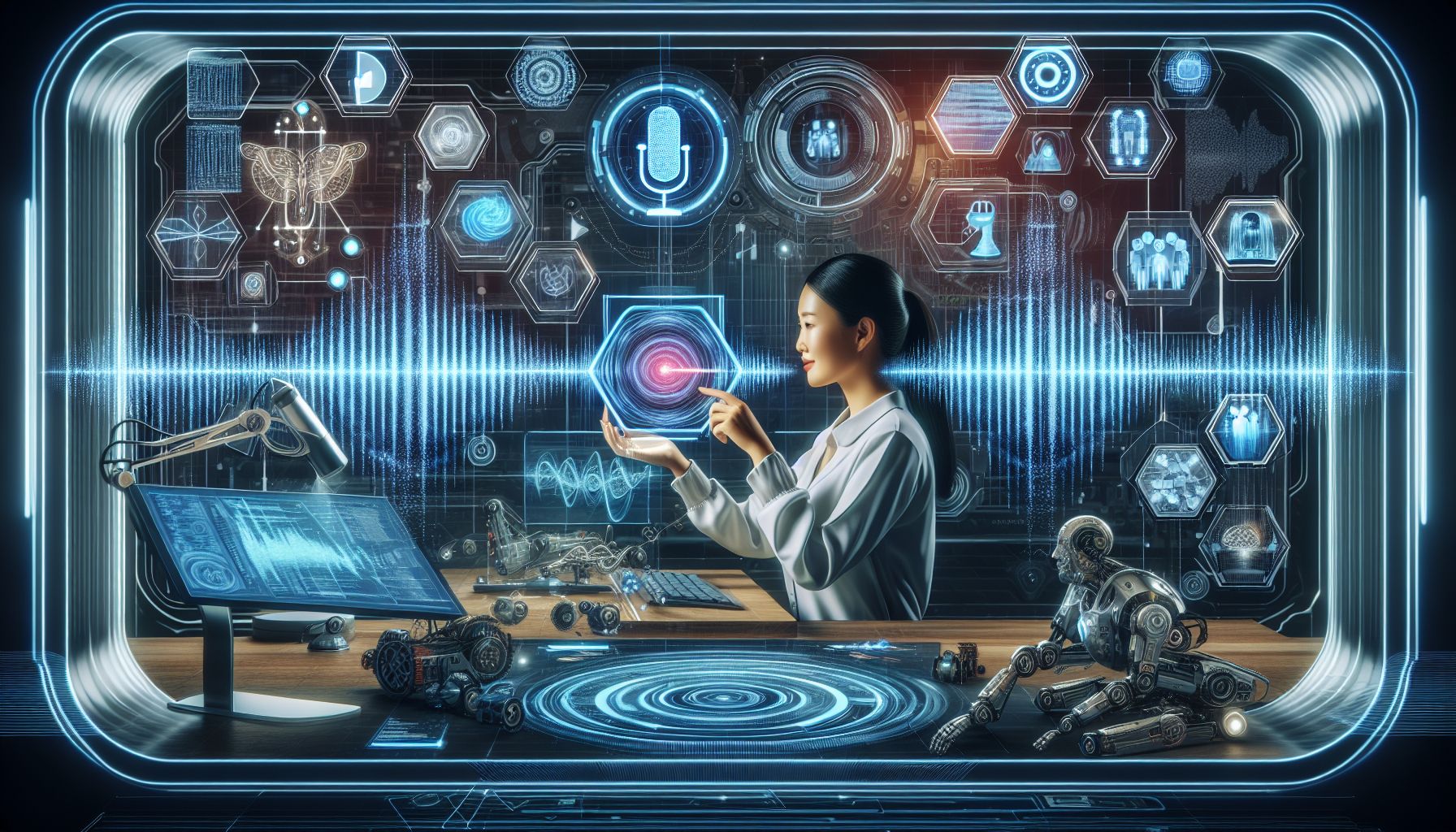📌 Let’s explore the topic in depth and see what insights we can uncover.
⚡ “Say ‘hello’ to your digital alter-ego, mimicking your unique voice pattern in real-time! Explore the uncanny world of AI voice cloning – a technology pushing the boundaries of what’s possible in 2025.”
Welcome to the future! A world where artificial intelligence (AI) can clone voices in real-time, creating eerily accurate and indistinguishable copies of any human voice. As intriguing as it may sound, this is not a scene from a Sci-Fi movie; it’s the reality of 2025. This blog post unravels the captivating world of AI voice cloning, its potential applications, and the best tools you can try today. In the era of rapid technological advancements, AI has proven to be a game-changer, reshaping numerous sectors. Voice cloning is a fascinating branch of AI that involves creating a computer-generated copy of a person’s voice. Imagine having a virtual assistant that sounds just like you or your favorite celebrity! More than a cool trick, AI voice cloning has practical use cases that extend to entertainment, accessibility, and beyond. Let’s dive deeper into the world of voice cloning, understand its workings, and explore the top tools you can try in 2025.
🤖 How AI Clones Voices in Real-Time

"AI Mimicry: The Future of Voice Cloning Unleashed"
AI-based voice cloning involves a process called text-to-speech synthesis (TTS), where written text is converted into spoken words. To clone a voice, AI algorithms need to understand the unique characteristics of the speaker’s voice - the pitch, the speed, the accent, and even the breaths taken between words. It’s like an audio fingerprint.
Now, how does AI clone a voice in real-time? It’s a two-step process:
**Voice Training
** The AI system is fed with hours of voice recordings from the person whose voice is to be cloned. The more data, the better. This helps the AI learn the unique voice characteristics.
**Synthesis
** Once trained, the AI uses a form of machine learning called deep learning to generate new speech in the cloned voice. It can then convert any written text into speech, replicating the specific voice. The beauty of AI voice cloning lies in its ability to clone voices with limited data, sometimes in a matter of minutes, and even in real-time!
🚀 Potential Applications of AI Voice Cloning
AI voice cloning might seem like a fun tool, but its applications are vast and impactful:
**Personalized Virtual Assistants
** Customizing Alexa or Siri to speak in your voice or your favorite celebrity’s voice can make interactions more enjoyable and personal.
**Voice Replacement in Film and TV
** AI can fill in for actors if they’re unavailable or have passed away, for re-dubs or even whole performances.
**Aiding Speech Impaired
** People with speech disabilities can use AI to create a synthetic voice that is as close to their original voice as possible.
**Language Translation
** Imagine a real-time translator that maintains the speaker’s voice characteristics, making the translation more natural and personalized.
**Audiobooks and Podcasts
** AI can clone the voice of authors, allowing them to narrate their own books posthumously, or create podcasts in their unique voice. As with any technology, AI voice cloning also comes with potential misuse, like deepfake audios and voice phishing. However, regulations, user awareness, and tech safeguards can alleviate these risks.
🛠️ Top AI Voice Cloning Tools to Try in 2025
Here are some of the top AI voice cloning tools on the market in 2025 that you should definitely try:
**Resemble AI
** This tool offers ultra-realistic synthetic voice creation. It’s used by global brands for voice-overs, virtual assistants, and audiobooks.
**Descript
** Descript’s ‘Overdub’ feature allows you to create a voice double of yourself. It’s perfect for podcasters and content creators.
**iSpeech
** iSpeech offers personalized text-to-speech solutions, including voice cloning. It’s used in industries like e-learning and telecommunications.
**CereVoice Me
** Developed by CereProc, this tool allows users to create a unique text-to-speech voice from their voice recordings. Remember, each tool has its strengths and ideal use-cases, so pick the one that best suits your needs. Also, these tools are continually improving, so keep an eye out for updates and new features.
🎯 Tips for Using AI Voice Cloning Tools
Here are some practical tips for using AI voice cloning tools:
**Quality Recordings
** For best results, provide high-quality voice recordings. Background noise or low-quality audio can affect the AI’s voice learning.
**Data Security
** Make sure the tool you’re using takes data security seriously. Your voice is unique and personal; ensure it’s in safe hands.
**Test and Refine
** Once your voice model is ready, test and refine it. You might need to provide additional data or tweak settings to get the desired output.
**Ethical Use
** Use these tools ethically. Misuse can harm individuals and damage your reputation.
🧭 Conclusion
As we step further into the future, AI continues to astonish us with its capabilities, and voice cloning is no exception. This groundbreaking technology, capable of mimicking any voice in real-time, is redefining how we interact with technology and each other. From personalized virtual assistants to helping the speech-impaired regain their voice, the applications are as varied as they are impactful. The top AI voice cloning tools of 2025, such as Resemble AI, Descript, iSpeech, and CereVoice Me, offer powerful capabilities and remarkable realism. But as we embrace this technology, it’s essential to use it responsibly, safeguarding our unique vocal identities and ensuring ethical application. AI voice cloning is not just an intriguing concept; it’s a real, practical technology that’s already changing the world. So, why not give it a try? Who knows, your next conversation could be with an AI clone of yourself!
📡 The future is unfolding — don’t miss what’s next!
